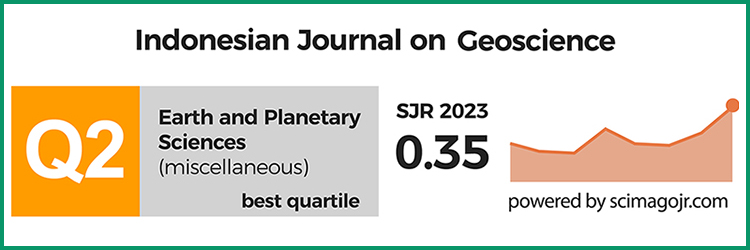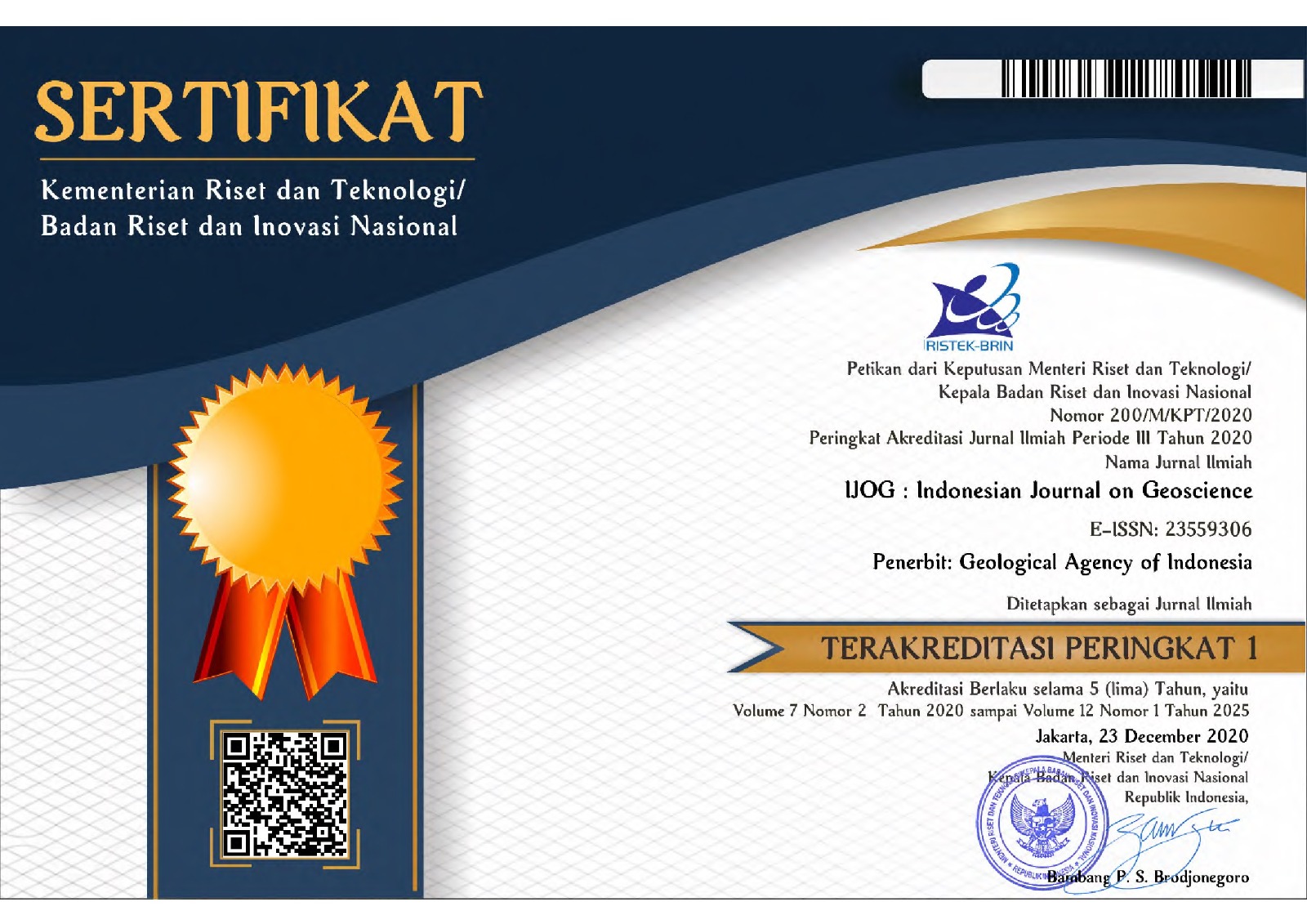Characteristics of Paleotsunami Sediments, A Case Study in Cilacap and Pangandaran Coastal Areas, Jawa, Indonesia
DOI:
https://doi.org/10.17014/ijog.8.4.163-175Keywords:
beach sediments, tsunami deposits, paleotsunami, grain size, fossil analysisAbstract
A paleotsunami study having been conducted in 2011 took two study cases in Cilacap and Pangandaran coastal areas. These two regions have been devastated by tsunami in the past and had the most severe damaged on 17 July 2006. Trenching, beach profiling, and sediment sampling had been carried out, and further analysis at the laboratory had been done, such as grain size and fossil analyses and dating. In Cilacap, an iron sand layer was found as a key bed suspected as a paleotsunami deposits due to the content of anthropogenic fragments. In Pangandaran, two layers of tsunami deposit candidates were found having thickness of 5 - 6 cm at the top as a 2006 tsunami deposit candidate, and 5 - 10 cm at the bottom as a paleotsunami deposit candidate. Both grain size and fossil analysis results could explain that Pangandaran’s sediments are tsunami deposits while Cilacap’s ones are assumed to be deposited by another process rather than a tsunami.
References
Anonymous, 1997. Radioactivity, https://hepwww.rl.ac.uk/UKDMC/Radioactivity/ U238_chain/Pb210.html-March 26th, 1997.
Balsillie, J. H., Donoghue, J. F., Butler, K. M., and Koch, J.L., 2002. Plotting equation for Gaussian, percentiles and a spreadsheet program for generating probability plots. Journal of Sedimentary Research, 72 (6), p.929-933. doi:10.1306/040402720929
Boer, W., Van den Bergh, G.D., de Haas, H., de Stigter, H.C., Gieles, R. and Van Weering, C.E., 2006. Validation of accumulation rates in Teluk Banten (Indonesia) from commonly applied 210Pb models, using the 1883 Krakatau tephra as time marker, Marine Geology. International Journal of Marine Geology, Geochemistry and Geophysics. doi:10.1016/j.margeo.2005.12.002
Newcomb, K.R. and McCann, W.R., 1987. Seismic and Tectonics of the Sunda Arc. Journal of Geophysical Research, 92(B1), p.421-439. DOI: 10.1029/JB092iB01p00421
Patriani, E., 2011. Laporan analisis paleotsunami daerah Cilacap dan Pangandaran Internal Report, PSG, Bandung.
Suantika, G., Yudhicara, Putranto, E.T., and Solikhin, A., 2006. Post Tsunami Survey of the 2006 Java Tsunami, Internal Publication, unpublished.
Wahono, T., 2012. Dua bibit badai penyebab angin kencang di berbagai daerah. Kompas News Online, https://sains.kompas.com/read/2012/01/25/16004127/Dua.Bibit.Badai.Penyebab.Angin.Kencang.di.Berbagai.Daerah.



















